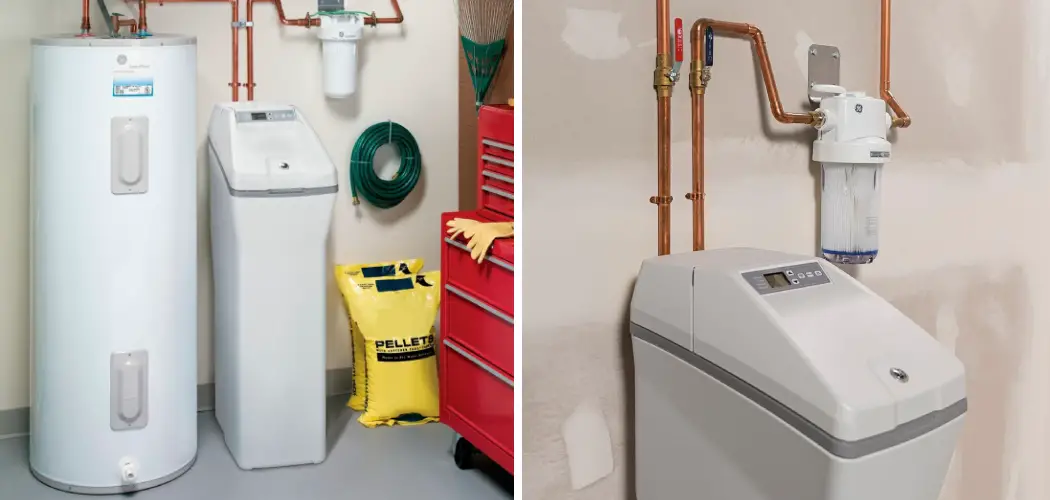A water softener is an essential household appliance that helps eliminate hard minerals from your tap water, such as calcium and magnesium. These minerals can cause significant damage to your plumbing system, appliances, and even your clothes if left unchecked. Hence, it’s crucial to ensure that your water softener is working correctly at all times.
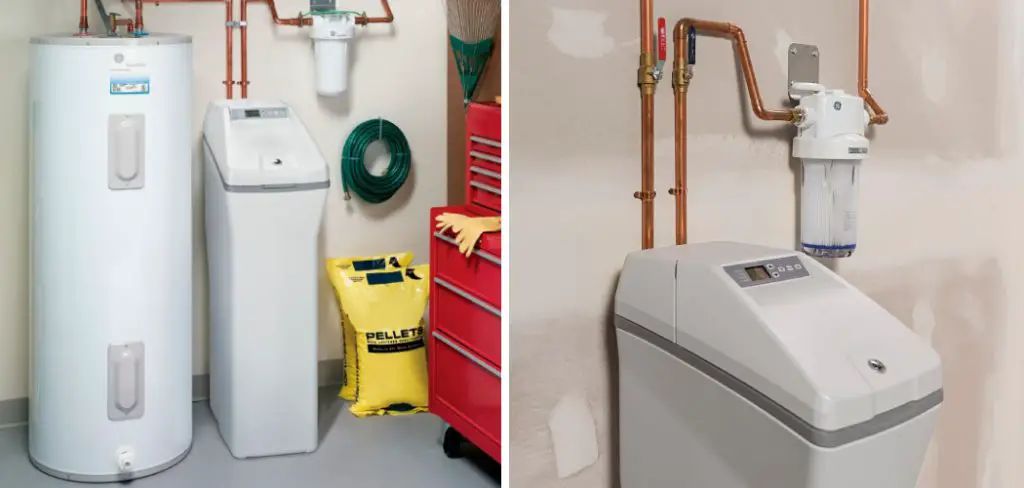
The main advantage of a water softener is that it extends the life of your plumbing and appliances. Hard water leaves behind mineral deposits that can clog pipes, reduce water pressure, and damage appliances such as dishwashers and washing machines. By using a water softener, you’ll save money in repairs and replacements. In this blog post, You will learn in detail how to make sure water softener is working.
Step-by-step Instructions for How to Make Sure Water Softener is Working
Step 1: Inspect the Brine Tank
Before we start, it’s important to understand how a water softener works. The brine tank is an essential component responsible for regenerating the resin beads in your softener. Start by checking if there is any salt buildup or debris on the bottom of the tank. If you see any, clean it out before moving on to the next step. This helps ensure that the tank is functioning properly and has enough salt to soften your water.
Step 2: Check the Salt Level
It’s important to make sure your water softener has enough salt for proper regeneration. You can check the salt level by looking inside the brine tank. If it’s low, add more salt until it reaches at least half full. Don’t overfill the tank, as this may cause issues with your water softener.
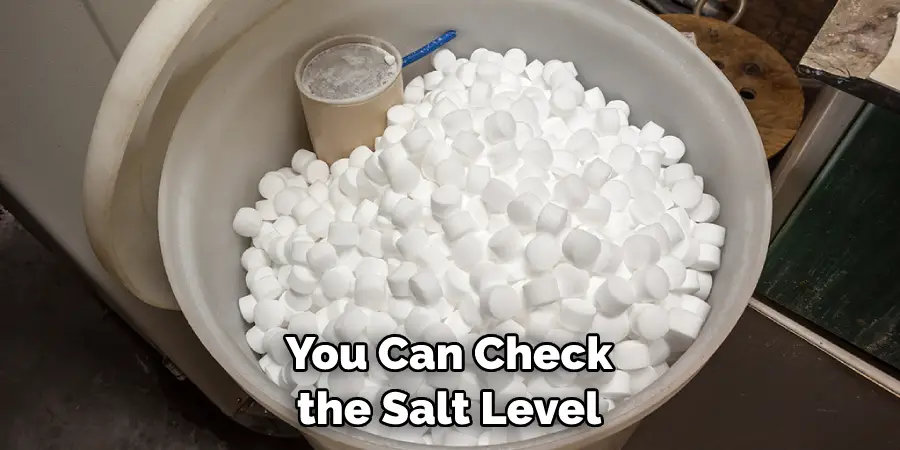
Step 3: Test Your Water Hardness
A simple way to test if your water softener is working is by checking the hardness level of your water. You can use a home testing kit or send a sample to a lab for more accurate results. If the water is still hard, it may be time to regenerate your softener.
Step 4: Check the Salt Bridge
A salt bridge is a hardened layer of salt that forms at the top of the brine tank, preventing proper water flow. To check for a salt bridge, use a broom handle or other long object to gently push through the salt layer. If you feel resistance, there’s a salt bridge and it needs to be broken up. This will ensure your water softener can properly regenerate.
Step 5: Inspect the Resin Tank
The resin tank is where the hard water is softened through ion exchange. Check for any signs of damage or cracks that may cause leaks. If you see any issues, contact a professional for repairs. Make sure your water softener is set to the correct hardness level and cycle times. Consult your owner’s manual for instructions on how to adjust these settings if needed.
Step 6: Listen for Regeneration
During a regeneration cycle, you may hear noises coming from your water softener such as running water or clicking sounds. If you don’t hear anything, it may be an indication that your softener is not working properly. The drain line is responsible for removing excess salt and minerals during the regeneration process. Make sure it’s connected and draining properly to avoid any buildup or clogs.
Step 7: Monitor Your Water Bill
If you notice a sudden increase in your water bill, it could be a sign that your water softener is not working as it should. Keep an eye on your bills and if you see a significant change, it may be time for maintenance.
To ensure your water softener continues to work properly, it’s important to schedule regular maintenance with a professional. They can inspect and clean your system, as well as make any necessary repairs to keep it running efficiently.
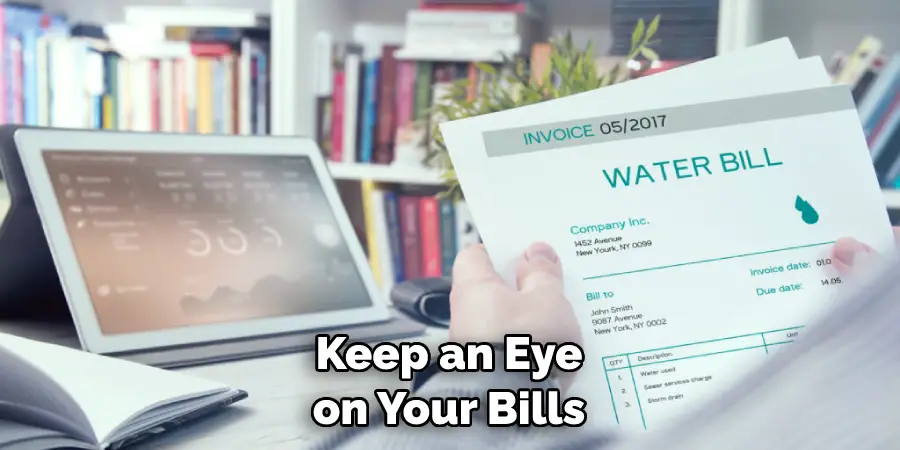
In conclusion, these steps will help you ensure that your water softener is working properly. By following these instructions regularly, you can enjoy the benefits of soft water in your home without any interruptions or issues.
Safety Precautions for How to Make Sure Water Softener is Working
- Perform regular maintenance on your water softener system to ensure that it is functioning properly. This includes checking the salt levels, cleaning or replacing filters and resin beads, and inspecting for any leaks.
- Use caution when handling salt pellets for your water softener. They can be harmful if ingested and should be stored out of reach of children and pets.
- If you notice any unusual noises or changes in water quality, immediately shut off your water softener and contact a professional for repairs. Continuing to use a malfunctioning system can cause further damage.
- Read the manufacturer’s instructions and follow them carefully when installing or setting up your water softener. Improper installation can lead to future problems.
- Be mindful of the amount of salt you add to your water softener. Too much salt can cause the resin beads to become overloaded, reducing their effectiveness.
- It is important to regularly test your water softener’s hardness levels to ensure that it is working properly. This can be done using a testing kit or by sending a sample of your water to a lab for analysis.
- If you are unsure about how to properly maintain or troubleshoot your water softener, consult a professional. They can provide expert advice and assistance to make sure your system is functioning correctly.
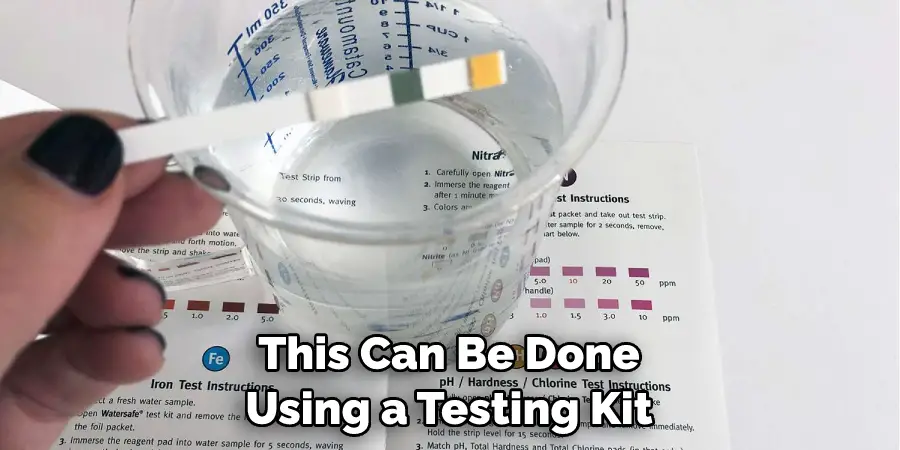
By following these safety precautions, you can help ensure that your water softener is working effectively and efficiently. Remember to prioritize regular maintenance and promptly address any issues to prevent costly repairs in the future.
What Are the Common Signs That Indicate a Water Softener is Not Working?
Water softeners are an essential appliance in many households, helping to remove the minerals that make water hard and cause various issues. However, like any other appliance, it is crucial to ensure that your water softener is working correctly to get the desired results. In this section, we will discuss some common signs that may indicate a problem with your water softener.
1. Decrease in Lather Formation
One of the most common signs that your water softener is not working correctly is a decrease in lather formation. Hard water contains minerals such as calcium and magnesium, which can interfere with soap’s ability to lather. If you notice that your soap is not creating enough suds or requires more soap than usual, it could be an indication that your water softener is not working correctly.
2. Scale Buildup
Another sign of an inefficient water softener is the presence of scale buildup on appliances and fixtures. Hard water leaves behind mineral deposits, commonly known as limescale, which can damage your dishwasher, washing machine, and faucets. If you start to notice a white or greenish residue forming around your appliances, it is a sign that your water softener needs attention.
3. Skin and Hair Issues
The minerals in hard water can also have adverse effects on our skin and hair. Hard water can leave a residue on the skin, making it feel dry and itchy, and cause scalp irritation, leading to dandruff. If you start to experience any of these issues, it could be due to hard water, which is an indication of a malfunctioning water softener.
4. Soap Scum
Hard water can also cause soap scum buildup in your bathtub and shower, making it challenging to clean. If you start to notice this residue on your bathroom surfaces, it could mean that your water softener is not working correctly. In some cases, the water softener may be using too much salt or not enough, leading to soap scum formation.
5. Hard Water Stains
Lastly, another sign of a water softener that is not working correctly is hard water stains on your dishes and glassware. These stains can be challenging to remove and may also affect the taste of your drinking water. If you notice that your dishes and glasses are not as clean as they used to be, it could be a sign of hard water due to an inefficient water softener.

Regular maintenance and addressing any issues promptly can ensure that your water softener continues to function correctly. If you notice any of the above signs, it is best to have a professional inspect and service your water softener to prevent further problems.
Are There Any Routine Maintenance Tasks You Need to Do to Keep Your Water Softener Functioning Correctly?
Yes, there are some maintenance tasks that you should regularly perform to ensure your water softener is functioning correctly. These include:
1. Check Salt Levels
The salt in your water softener is what removes the minerals from hard water. It is essential to check and refill the salt tank regularly, as recommended by the manufacturer.
2. Inspect the Brine Tank
The brine tank holds the salt and water solution used to regenerate the resin beads in your water softener. Regularly checking for any buildup or blockages can help prevent issues with the regeneration process.
3. Clean the Resin Tank
Over time, resin beads can become coated with minerals and lose their effectiveness in removing them from hard water. It is essential to clean and recharge the resin tank periodically to maintain its efficiency.
4. Check for Leaks
It is crucial to regularly check for any leaks in your water softener system, as they can cause significant damage if left unaddressed.
5. Schedule Professional Maintenance
Along with regular maintenance tasks, it is recommended to have a professional inspect and service your water softener at least once every year. This can help catch any potential issues before they become more severe.
By performing these routine maintenance tasks, you can ensure that your water softener continues to function correctly and provide you with all the benefits of soft water.
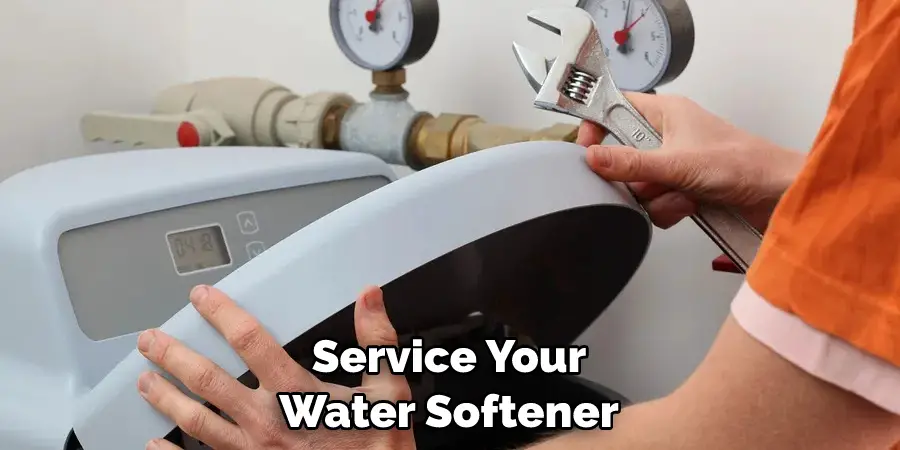
Conclusion
In conclusion, making sure your water softener is working properly will not only save you money, but it also ensures that your household has access to clean and soft water. By following these simple steps, you can easily determine if your water softener is functioning correctly.
Another way to ensure your water softener is working is by regularly checking the resin beads. These beads should be replaced every few years to maintain their effectiveness. If you notice a decrease in the softness of your water or find that the resin beads are discolored or damaged, it may be time to replace them.
I hope reading this post has helped you learn how to make sure water softener is working. Make sure the safety precautions are carried out in the order listed.

